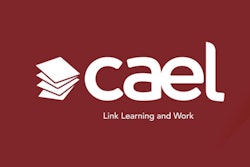The University of California Irvine (UC Irvine) last week launched its first Online Learning Research Center as a resource for students and faculty navigating online education in the wake of the coronavirus.
The center was supposed to open this summer. Its directors – Dr. Di Xu and Dr. Mark Warschauer, professors in the school of education – applied for a $10 million grant to establish it, funds they’re still waiting on. But when education professionals clamored for online learning advice — as dozens of colleges scrapped in-person instruction and decided to move to teaching online due to the pandemic — what was supposed to happen over several months unfolded in a matter of days.
 Dr. Di Xu
Dr. Di XuThe long-term goal of the Online Learning Research Center is to offer research-based guidance for quality and equitable online education.
“Unfortunately, historically, there has been a performance gap between online and face-to-face learning, and that gap has been most greatly suffered by those who are already struggling,” Warschauer said. “It’s the underrepresented students, the low-income students, the low-performing students … But we also know there are things we can do to reduce those gaps.”
In the short term, the directors realize instructors can’t design high-caliber online courses overnight. The hope is to provide “basic tips” to speedily “create the best learning experience they can, especially for diverse students,” he added.
Xu and Warschauer have been studying online education, and the hurdles that come with it, for decades now.
A lot of research is out there, Xu said, and now she feels a responsibility to quickly disseminate it.
Her work shows that, across states and higher education systems, especially more accessible institutions like community colleges, students experience lower retention rates in online courses versus in-person schooling with “substantial variation” from course to course and for different demographic groups. For example, younger students, male students and academically underprepared students tend to fare worse in online education.
“I’m worried that the current massive switch from face-to-face to online will further exacerbate the equity gaps among students and put the students who are already struggling in a further disadvantaged position,” she said. “My worry is some of them might quietly disappear…”
 Dr. Mark Warschauer
Dr. Mark WarschauerThe center is already putting out advice for students and teachers on their website. The next step is a rubric, likely coming out next week, to help instructors assess their online teaching and look out for challenges their students are facing.
Some of the most substantial obstacles for students in online courses are a lack of “support and structure” and a lack of “in-person communication,” Warschauer said. The students who do best in online education are self-motivated, or as he put it, the ideal online learner is “a highly-paid person in the IT industry … who already knows 20 software programming languages and he wants to learn the 21st.” But that’s not who most of today’s college students are.
Still, there are ways to boost their success.
For one thing, faculty should try to make the class as personal and interactive as possible, Xu said. When Xu interviews students about their online classes, she finds that many feel isolated or believe their work doesn’t matter to their professors.
“The feeling of being connected to your instructor is critical to learning outcomes,” she added, and teachers can create that feeling online in a number of ways. They can post video ice breakers, incorporate more face time and narration into how they deliver their content and set up opportunities for questions, like online office hours and live chats.
They can also reach out to students who are struggling, Xu said, which can be particularly valuable for underrepresented students who may have less supports at home. She emphasized that one of the advantages of online education is it’s actually easier to identify at-risk students. It’s clear when a student procrastinates or misses an assignment, which gives instructors the opportunity to reach out and offer personalized help or encouragement.
Faculty should also ideally try to equip students with tools for time management and organization. In interviews with students, Xu often finds they think of online courses as “flexible” and “easy to pass,” which makes them underprepared for the self-direction required by online learning.
On an institutional level, she’d like to see universities moving services like tutoring and academic counseling online as well, so students can maintain some of the supports they usually have on campus.
“In my opinion, it is really critical,” she said.
As Xu and Warschauer continue turning their research into guidelines for classrooms impacted by the virus, Warschauer is hopeful that it will be a time of learning for education systems – and for online learning scholars like them. Even though it’s not the ideal moment to study how online learning compares to face-to-face classes – because instructors are rushing to respond to the crisis, not carefully constructing their courses – this moment will give researchers at the Online Learning Research Center data about how to educate students in an emergency.
“Unfortunately, these types of crises have happened before in the world, and they’re gonna happen again,” Warschauer said. “We need to learn from this, what happens in this kind of emergency learning? Do kids’ educations suffer? Whose education suffers the most? What are the approaches people have taken to ameliorate that, and have they been working or not?”
Sara Weissman can be reached at [email protected].















